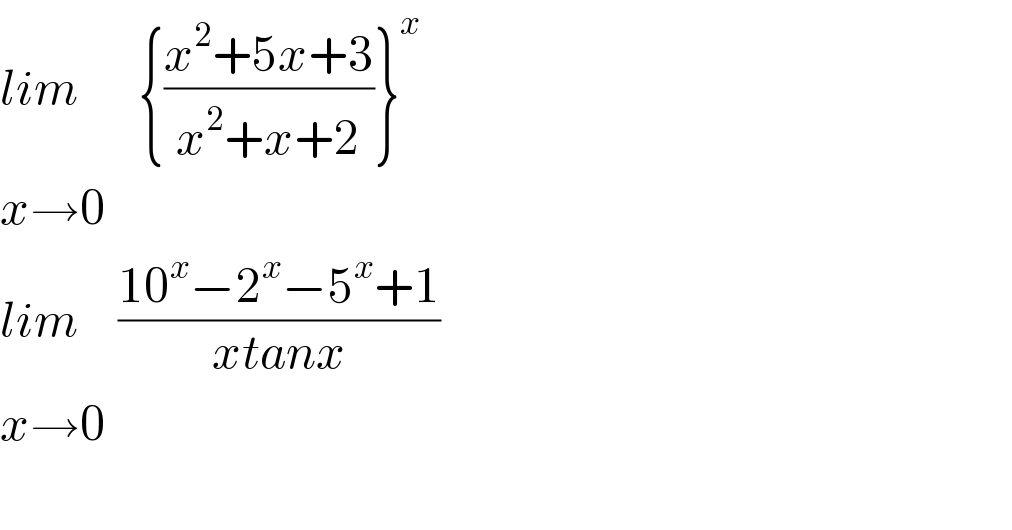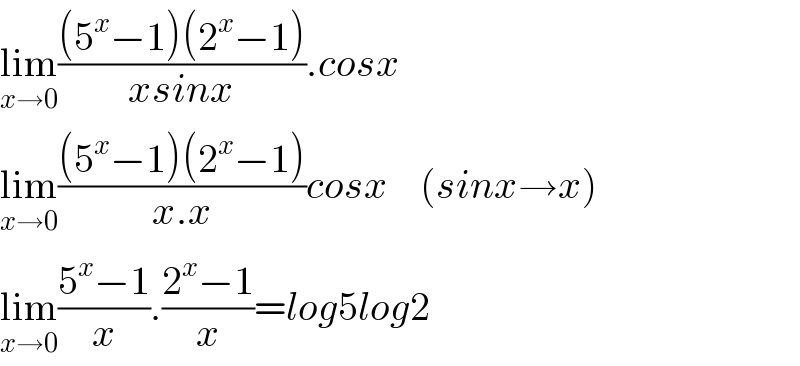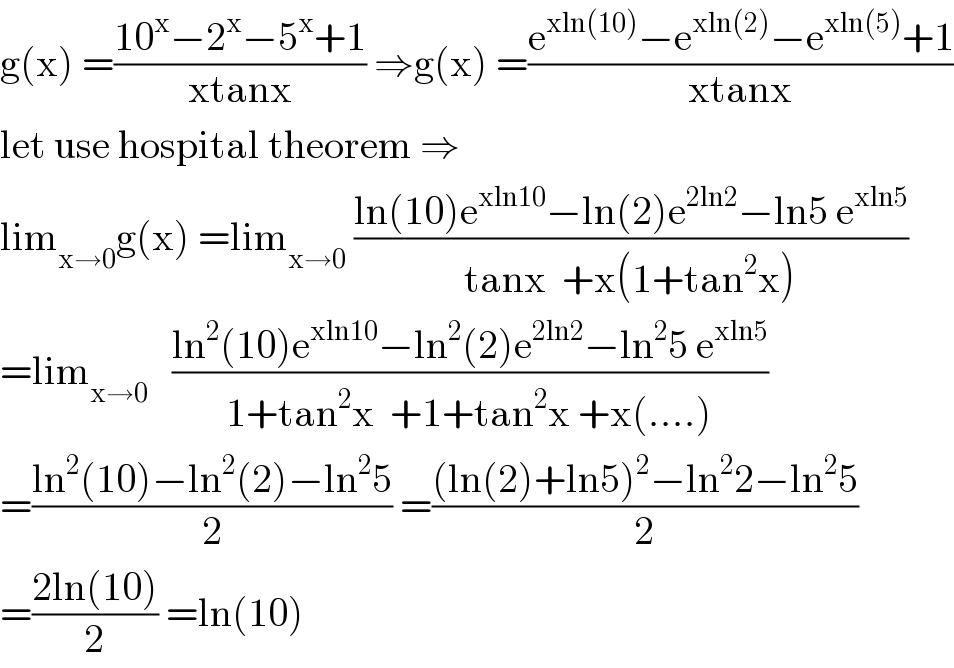
Question and Answers Forum
Question Number 107828 by Rohit@Thakur last updated on 12/Aug/20

Answered by Dwaipayan Shikari last updated on 12/Aug/20

Answered by mathmax by abdo last updated on 13/Aug/20

Answered by mathmax by abdo last updated on 13/Aug/20

Commented by Dwaipayan Shikari last updated on 13/Aug/20

Commented by Dwaipayan Shikari last updated on 13/Aug/20

